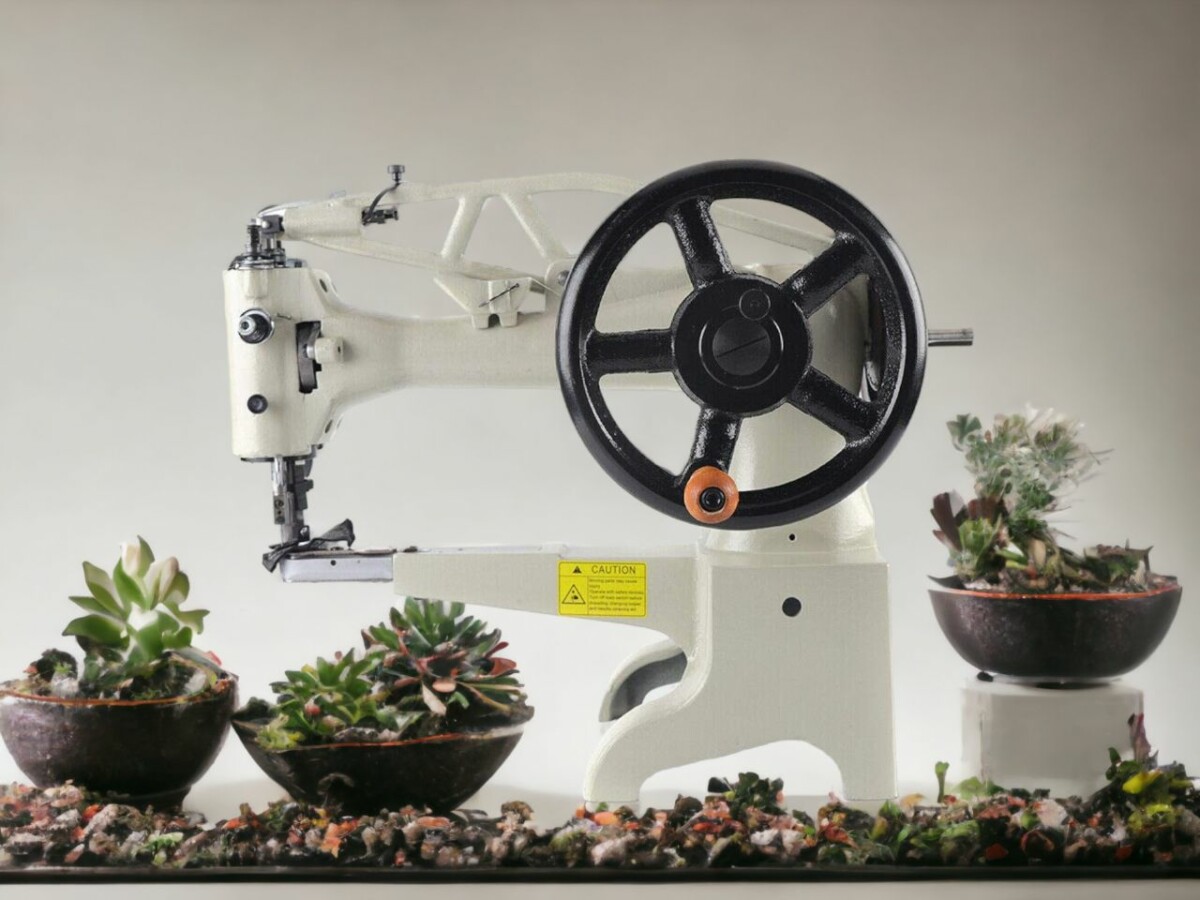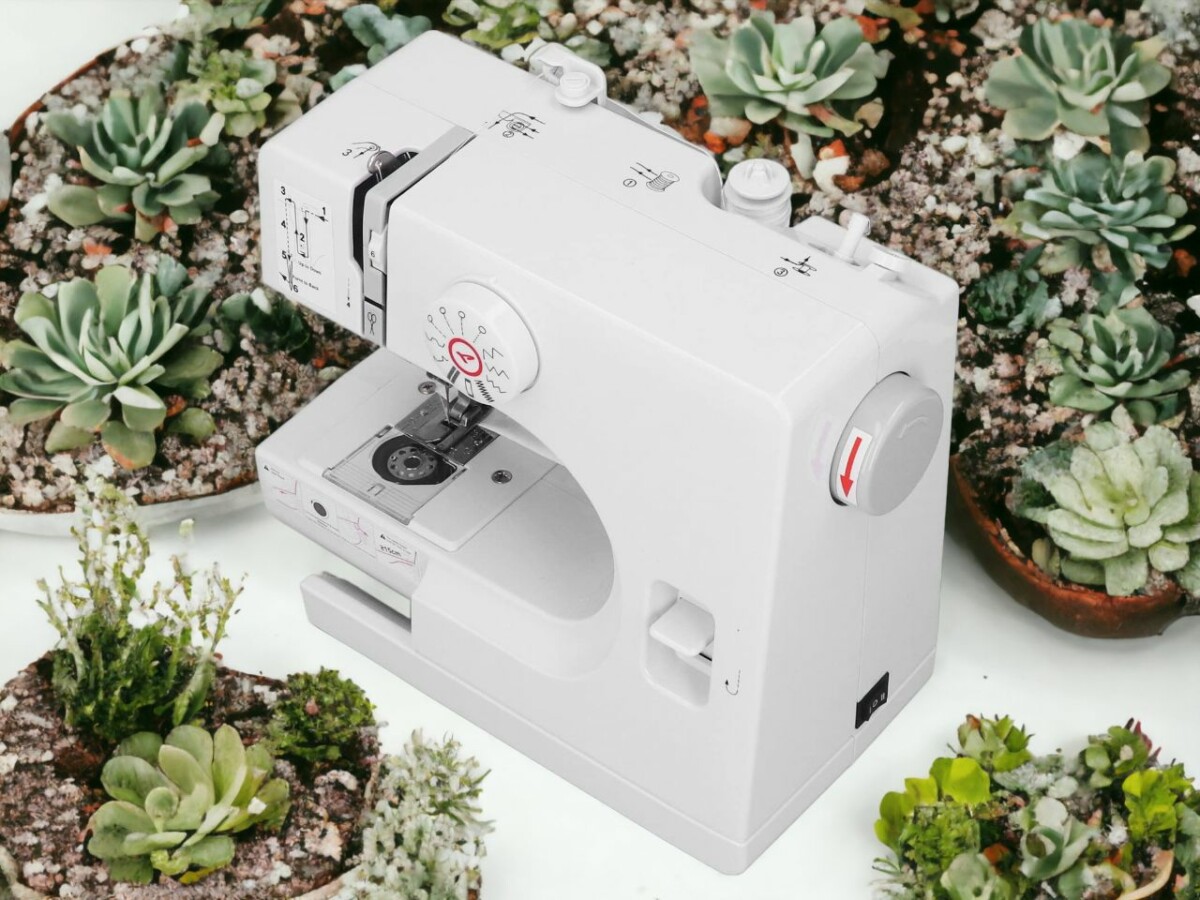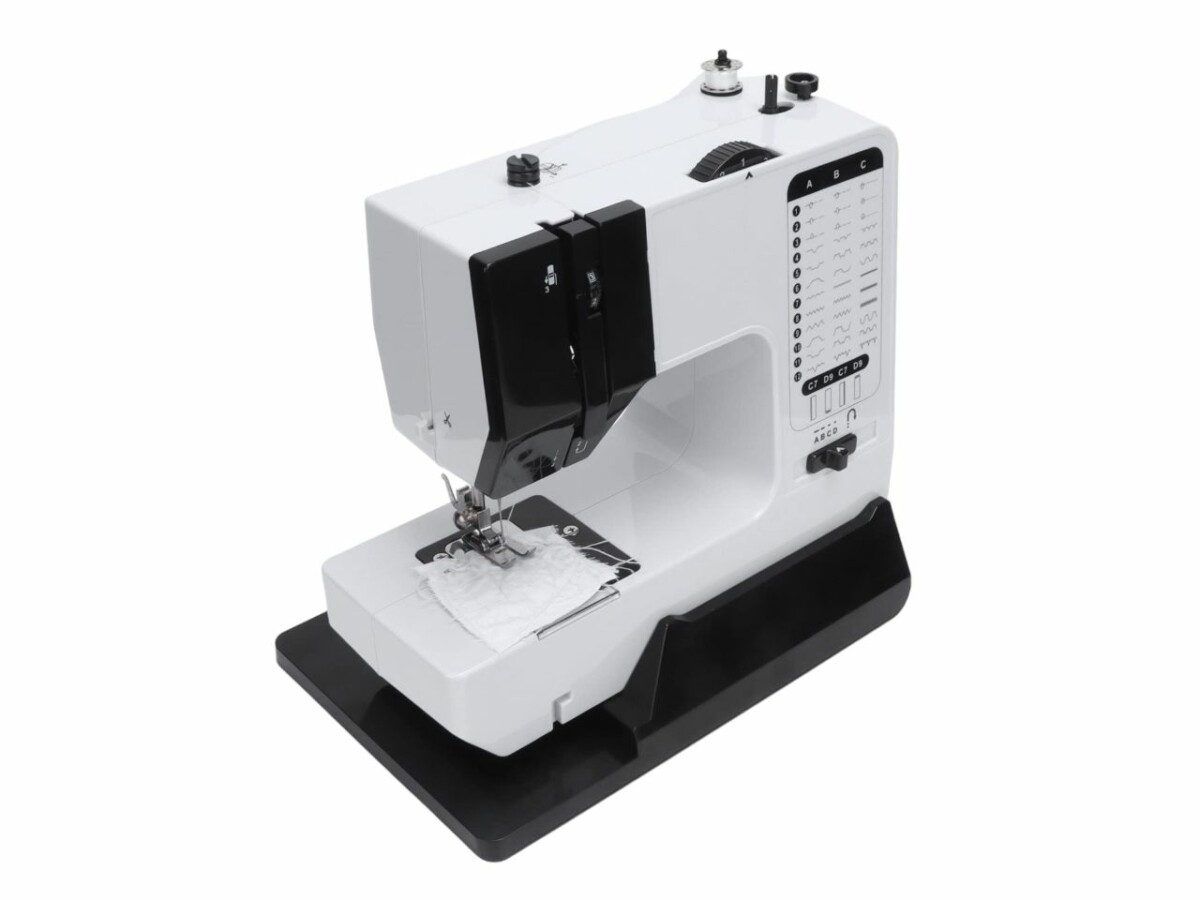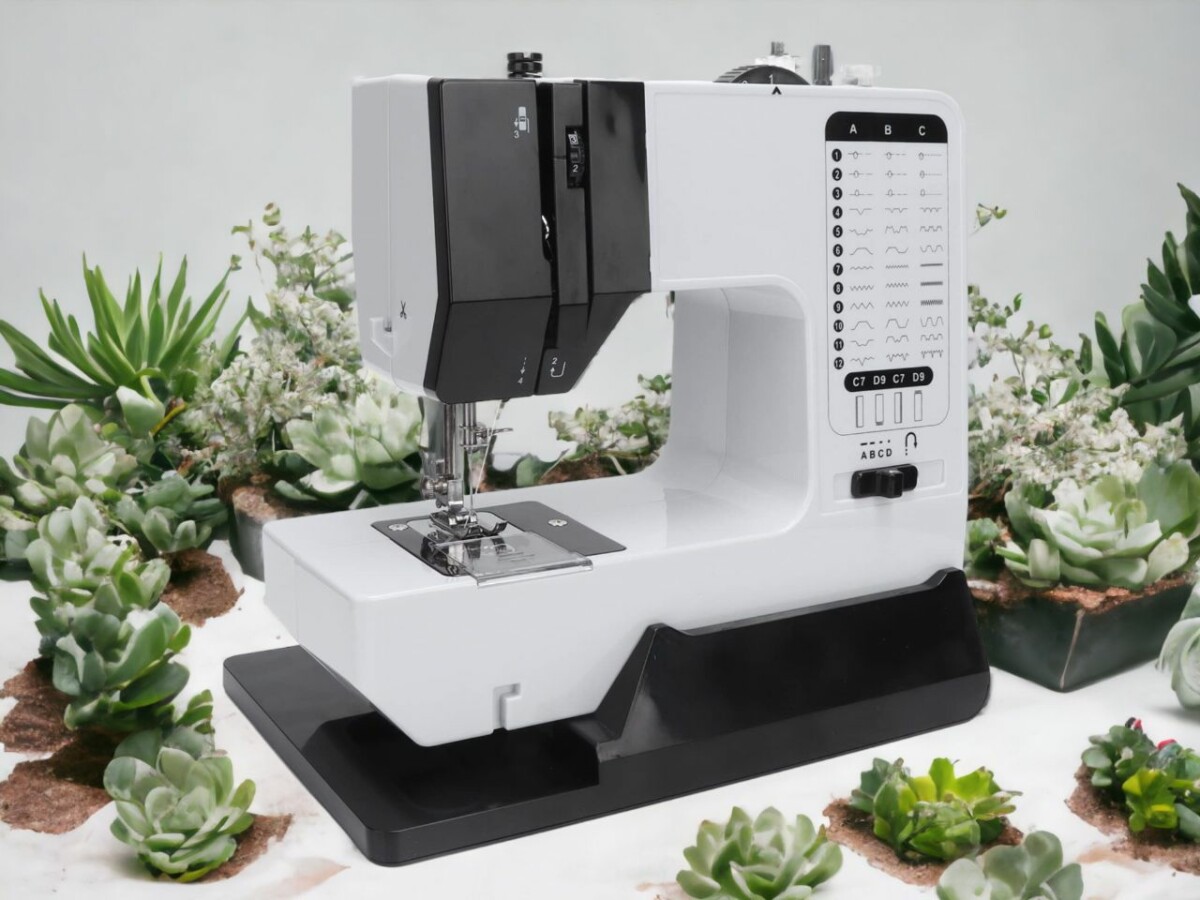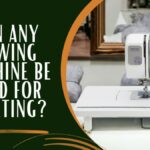So, your presser foot has gone MIA and you’re just dying to dive into your next sewing project. Is it possible? Absolutely, but it’s not going to be a walk in the park.
You see, the presser foot isn’t just there for kicks; it’s the key to stabilizing your fabric and perfecting stitch tension. Without it, you’re looking at some seriously wonky stitches.
But don’t lose hope, free motion sewing and lowering the feed dogs could be your saving grace. This guide is going to take you on a wild ride through the ins and outs of sewing without a presser foot, touching on the unique challenges and skills you’re going to need.
Strap in and get ready to level up your sewing game.
Can You Operate a Sewing Machine Without a Presser Foot?
Technically, yes, but it’s far from advisable. The presser foot helps hold the fabric steady to facilitate even stitching. Sewing without it could end up causing uneven stitches or the fabric to jam.
Alright, let’s break this down.
The presser foot in sewing is like the unsung hero. It’s got three main gigs: it keeps your fabric steady, influences the tension of your stitches, and helps you control how the fabric moves through the machine.
Honestly, picking the right presser foot is a game changer. When you nail it, you get those perfect, even stitches and sewing becomes a breeze. But if you slack off on this, you might find yourself wrestling with the fabric and dealing with wonky stitch tension.
I get it, there are other ways to go about it. Like, you could lower the feed dogs to manually control how the fabric moves. But let’s be real, that’s expert level stuff, and it’s usually reserved for more fancy-pants sewing techniques.
The Impact of Stitch Tension and Fabric Stability
So, you’re thinking about sewing without a presser foot, huh? Well, let me tell you, it’s not as simple as it sounds. The presser foot isn’t just there for show—it plays a crucial role in maintaining stitch tension and ensuring fabric stability. Without it, your stitches might end up looking more like abstract art than a neat seam. And the fabric? It’s like trying to herd cats. Without the foot to keep it in line, it just goes where it wants.
You’ll have to step up your game and take fabric control into your own hands. It’s not gonna be a walk in the park, but with a bit of skill and persistence, you might just pull it off. Just remember, a great sewing job hinges on stitch tension and fabric stability, so if you’re gonna go commando, you better understand the potential fallout.
It’s not all doom and gloom though. Practice makes perfect, and patience is key. And don’t sweat the small stuff—every mistake is a learning opportunity. So, gear up and get ready for a wild ride in the world of sewing sans presser foot. You’re gonna need all the luck you can get.
Techniques and Tasks Possible Without a Presser Foot
You may think it’s a total no-go to sew without a presser foot, but hold your horses – there’s more to the story.
Techniques such as free motion sewing actually thrive when the presser foot gets a time out. How so? Well, it’s all about giving the feed dogs on your machine a breather by lowering them. This gives you the freedom to move your fabric in any direction you want, making it a total game changer for free motion quilting.
But here’s the kicker – without a presser foot, you’re the boss. So, you’ll need to have your sewing skills on point to keep those stitches even. It’s like a high stakes game of Operation, but with fabric.
Free Motion Sewing
So, we’re about to dive into the whole shebang that’s free motion sewing. It’s this super cool method where you can sew without being tied down by a presser foot. This is a go-to for stuff like quilting and embroidery. You’re gonna need a few sewing machine extras, like a darning foot, for this. It gives you the reins while you move the fabric under the needle.
With free motion sewing, you can do stuff like:
- Free motion quilting: This is where you get to bring out your creativity with intricate designs on your quilt tops.
- Using a darning foot: It’s like your secret weapon for better fabric control.
- Lowering the feed dogs: This gives you the freedom to move the fabric as you like.
- Monogramming or embroidery: It’s your chance to put your personal stamp on your projects with unique designs.
- Using an embroidery hoop: This bad boy helps to stabilize the fabric.
- Sketching your design on the fabric before sewing – It’s always good to have a game plan, right?
Lowering Feed Dogs
Lowering the feed dogs on your sewing machine might feel like you’re trying to crack a cryptic code at first, but trust me, once you’ve got it down, it’s like unlocking a secret level in a video game. You’re suddenly able to try out all these cool new techniques and tasks that don’t need a presser foot.
To give you the lowdown, feed dogs are like the little helpers in your sewing machine. They grip and move the fabric under the needle. So, when you lower them, it’s kind of like turning off their autopilot. Now, you’re the boss, with complete manual control over your sewing.
This opens up a world of possibilities. Ever heard of free-motion sewing? That’s when you get to set the pace and direction of the fabric. It’s like going off-road with your sewing machine, and it’s a blast.
If you’re feeling adventurous and want to ditch the presser foot, you can swap it out for a darning or embroidery foot. They’re like hoverboards for your fabric, floating above it instead of pushing it down.
Just remember, it’s all about practice. It’s gonna be a rollercoaster at first, but with time, you’ll nail it and your stitch game will be on point. So keep at it, and you’ll soon be sewing like a pro.
Special Fabric Control
In the world of stitching and sewing, ditching the presser foot is like unlocking a hidden skill set. It’s like leveling up your sewing game and gaining a whole new set of techniques for special fabric control. It might be a bit of a challenge at first, but just like any skill, the more you practice, the better you get.
Let’s dive into these techniques:
- Manual Manipulation: This is you taking the wheel. You have to guide the fabric yourself, but remember not to go all Hulk on it, you don’t want to break the needle.
- Free Motion Sewing: Think of this as the freestyle rap of sewing. It’s all about creativity and there are no rules. It’s particularly great for embroidery.
- Straight Stitching: This one is a bit tricky without a presser foot, but with a little patience and persistence, you’ll nail it.
- Alternative Fabric Stabilizers: These are like your cheat codes. Hoops and sticky stabilizers can give you some control and mimic the function of a presser foot.
It’s a different path to take, but trust me, it’s so worth it. It’s like adding another feather to your sewing cap.
Lowering the Feed Dogs for Specialized Techniques
Check this out, by dialing down the feed dogs on your sewing machine, you’re unlocking the ability to pull off some pretty cool techniques, like free motion quilting, and you don’t even need a presser foot for that.
For instance, when it comes to embroidery, lowering the feed dogs really lets you take charge, giving you the freedom to move your fabric as you please and create some seriously intricate designs.
You might want to switch to a darning foot for free motion quilting, it’s a game changer. This foot gives you a better look at what you’re doing and way more control.
But here’s the kicker, when the feed dogs are down, the machine isn’t going to feed the fabric through for you. So, you’re the boss of moving the fabric.
I’d suggest giving it a go on some spare fabric you have lying around before diving into a big project. It’ll take a bit of getting used to, but once you get the hang of it, you’ll be pumping out some pretty spectacular pieces. Trust me, it’s worth the practice.
Skill Requirement for Sewing Without a Presser Foot
Getting the hang of sewing sans presser foot isn’t a piece of cake, so don’t expect magic to happen overnight. It seriously tests your patience, demands your utmost attention, and most importantly, it needs you to be in the ‘practice makes perfect’ mindset. Sure, a presser foot comes with its perks like making your fabric stay put and ensuring even stitch tension, but there might come a time when you’ve gotta make do without it.
Here’s how to nail it:
- Get to know your sewing machine like the back of your hand, especially the tension settings. This is going to be your secret weapon to make up for the pressure that the presser foot normally provides.
- Get creative with other ways to keep your fabric steady. Tools like embroidery hoops or fabric stabilizers could be game-changers.
- Practice makes perfect, right? Always start with some scrap fabric to avoid messing up your actual project while you’re still figuring things out.
Influence of Sewing Machine Type and Special Features
The sewing machine you roll with can totally shake up your sewing sesh, especially when you’re going footloose – that is, sewing without a presser foot.
Now, some machines are decked out with fancy features like a ‘fabric control foot’ that can seriously save your bacon, making up for that MIA presser foot.
Sewing Machine Type Impact
The kind of sewing machine you’re rocking can really make a difference when you’re trying to sew without a presser foot. It’s all about how well your machine can adapt to other ways of controlling the fabric.
Some machines come with features that have got your back when your presser foot decides to play hide and seek:
- Let’s talk about *Built-in Stabilizers*: These bad boys can give you a hand with keeping your fabric in check.
- Then there are *Adjustable Feed Dogs*: With these, you can play around a bit, make them go up or down, and really get a grip on how your fabric is moving.
- And let’s not forget about *Special Feet*: Some models are decked out with these, and they can do a pretty solid job of copying what a presser foot does.
But remember, each machine is its own special snowflake. So, it’s all about getting to know your machine inside and out. But hey, don’t sweat it, with a bit of practice and some mad sewing skills, you’ll be able to handle any sewing curveball, even if your presser foot goes MIA.
Role of Special Features
When it comes to sewing, your machine’s special features can seriously up your game. I’m talking about everything from inbuilt stabilizers to adjustable feed dogs – these bad boys can totally change your sewing adventures.
Especially when you’re trying to go rogue and sew without a presser foot – yeah, it can be a wild ride. These features are basically your fabric control superheroes, making your work a breeze.
But don’t sleep on the presser foot, it’s low-key essential. It’s your go-to for stability, even stitches, and keeping the tension just right.
But hey, if you’re feeling adventurous and your machine has adjustable feed dogs, go ahead and lower them for some extra fabric control. Just keep in mind, you gotta get your hands dirty with these features to truly master them.
But once you do, it’s like unlocking a whole new level in the sewing game.
Conclusion: Mastering the Use of Your Sewing Machine
Well, isn’t that something? Sewing isn’t all about having all the parts in a specific order, it’s also about improvising and optimizing by what got on hand. But if you’re considering to evolve into more complex projects like quilting, the ideal scenario would be to use a proper sewing machine for quilting. It’s groovy knowing that you can step back from the conventional journey and attempt quilting without having a fancy machine, though you might find the ride a bit bumpy!
Now, if you’ve been wondering whether you can use that vibrant hand quilting thread in your sewing machine that’s been lying idle in your drawer, the answer is: yes, you can! Just clear your schedule because you might find a lot of trial and error coming your way, so you’d better be prepared for that.
And what about the good ol’ nylon thread in a sewing machine? Can it replace the common cotton or polyester thread you’ve used all this entire time? Surprise! It absolutely can, although there are differences in tension and slickness that you should be aware of. But don’t fret, it’s all part of the learning process and the sewing journey!
So, take it easy, crafty buddy! Keep pushing your boundaries, experimenting with your ideas and most importantly, keep those threads spooling without fear.
Sewing is definitely one of my biggest hobbies. I’ve been doing it since i was young, thanks to my mother. I specialize in sewing, and that’s what i mostly write about.


